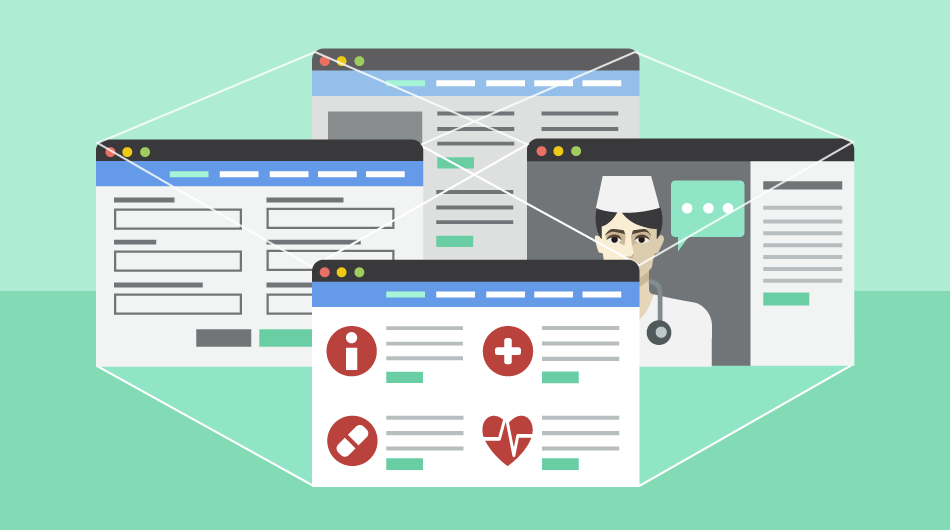Patient Engagement is an incredibly important part of the healthcare industry and Yana Yelina lays out how to use technology to improve patient engagement.

Patient engagement is becoming one of the priorities in the healthcare sphere. Clinicians try to involve individuals in managing their own health in different ways: from creating social media communities to promoting health literacy.
They also pay careful attention to engaging via tech:

Source: TechTarget
Being the most popular method to boost patient involvement, medical portals let users fulfill a broad spectrum of tasks:
- schedule appointments;
- hold e-consultations with caregivers;
- chat with physicians;
- complete, download and upload online forms;
- check medications;
- ask for prescription refills;
- see allergy lists;
- track changes in health records;
- use educational resources.
As such portals allow enhancing medical workflows, their adoption by hospitals is on the upswing. However, to secure patients’ information, function seamlessly and bring tangible benefits, such portals must be HIPAA-compliant and have an array of key features.
Let’s take a deep dive into the topic and find the difference between an effective patient portal and a mediocre one.
User-centricity and accessibility
According to Software Advice, 41% of individuals get lost while navigating a medical portal. That’s why the website has to offer a straightforward and understandable interface. That will help shorten adaptation time for both doctors and patients, while cutting training costs.
Moreover, make sure your portal is disability-accessible. Visually-impaired people, for instance, should be provided with a screen reader-friendly website. Hearing-impaired users, in turn, will need a qualified sign language interpreter during live conferencing.
Seamless integration
An optimal portal is easy to integrate with other software adopted within the hospital. Good integrations let physicians optimize the workflow and obtain greater insights into patients’ health. It could be beneficial to integrate a medical portal with the following third-party systems:
- Electronic health records (EHR). Thanks to such integration, clinicians are spared the need to manually enter individual healthcare reports and lab test results in a portal. All of it happens automatically, which means patients get updates much faster.
- Patient-generated health data (PGHD). There’s substantial doubt about an efficient use of data gathered by mHealth apps, wearables and home equipment. Yet the integration of such data with portals and EHR systems could give an accurate window into patients’ wellness and become a significant step in improving their health.
Health literacy
Thanks to the integration with EHRs, patients will have quick access to their test results. However, few of them will be able to freely translate all the medicalese into plain English and interpret certain indicators.
Here's where health literacy comes into play. Apart from multimedia educational resources, a portal should have a vocabulary with clear explanations of symptoms, diseases, or lab test results (e.g. hemoglobin or blood glucose levels).
Open notes
Open notes, i.e. visit notes shared with patients and their relatives, are also able to add true value to a medical portal. Such notes empower patients and caregivers alike, help individuals feel more in control of healthcare decisions, improve the quality of care, boost patient engagement and make care safer.
Dozens of healthcare systems have already joined this initiative and shared success stories.
Automatic notifications
Users won’t appreciate a portal that forces you to log in every time you want to check for updates. That’s why it’s vital that the system automate notifications. Such an essential feature will let patients receive emails or SMS texts, when:
- a new message arrives;
- the system reminds of an appointment;
- health records are updated;
- lab results are ready.
However, not everyone likes receiving a huge number of notifications: pop-ups (when they are logged in) or emails (when they are logged out). To keep users happy, your portal’s notifications should be configurable.
Invoice management
Billing automation is another feature that makes a portal more powerful. With this option, patients get an opportunity to better manage their payments for e-consultations or other healthcare-related services.
In addition, invoice automation eases the process of contacting hospitals’ billing or insurance departments to resolve a financial issue or ask for a reimbursement.
Mobile access
Mobile phones are everywhere. A case in point: smartphone penetration in the USA reached 80% in 2016. Therefore, make sure your portal is mobile-friendly by empowering patients to access their records, check prescriptions, or respond to messages no matter when and where.
Key takeaways
Medical portals are becoming one of the major drivers of delivering better services. They enable patients to obtain health information and receive updates. Doctors, in turn, get details on a particular case, which allows streamlining decision-making.
However, not any portal can assist in optimizing patient care. When collaborating with a healthcare software company, ask for a workable solution with such essential features as accessibility, notifications and billing automation, third-party integration and availability of educational resources.
Yana Yelina is a Technology Writer at Oxagile, a New York-based software company that develops custom medical solutions to help hospitals, health systems, and assisted living facilities to improve patient outcomes, stabilize costs, and secure PHI.


